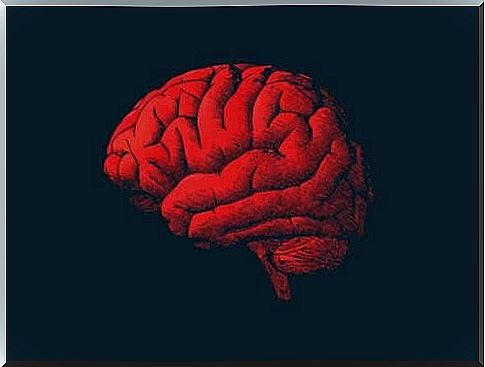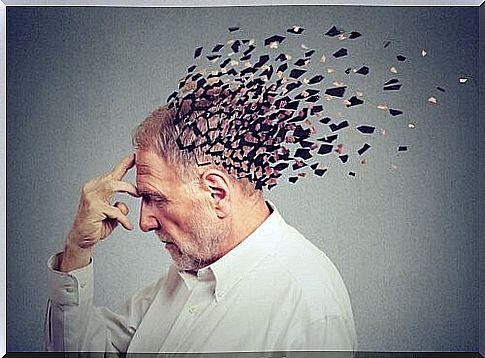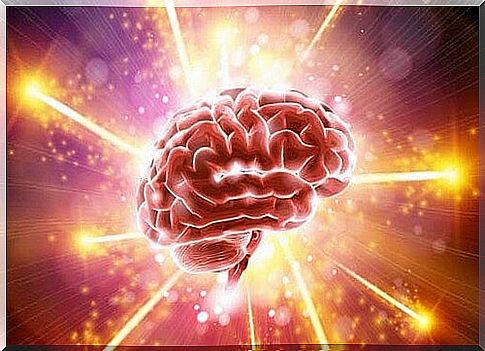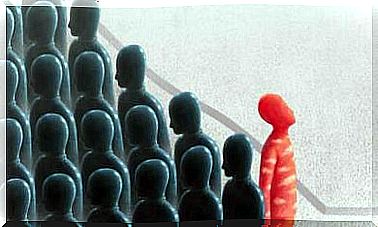The Brain Ages And The Answer Lies In The Genes

The brain ages just like all structures and systems in the body do. Despite this, there are people who seem to age faster than others. We are not just talking about their physical appearance, but also about their mental abilities. Why does this happen? Are there people more likely to get old? Is it possible to slow down the aging process?
Apparently the answers to uncovering the mysteries of brain aging lie in some genes. A group of scholars from the Babraham Institute of Cambridge (UK) and the Sapienza University of Rome have investigated this interesting process. They have conducted several researches on the genetic gears that affect the complex mechanism of age-related cognitive decline.
We certainly know in principle what happens as the brain gets older . For example, we know that neurons deteriorate, die and are replaced by new ones. This process is facilitated by a type of mother cell: neural stem cells (CSN), cells of the nervous system capable of regenerating and giving life to progenitor cells.
However, over time, these cells become less and less functional. This circumstance also causes the brain to become less efficient. What makes these cells age? What are the molecular changes responsible for their deterioration? These are the questions the researchers answered.
What Happens When the Brain Ages?
Before understanding why the brain ages, let’s see what brain aging consists of. Brain aging is inevitable to a certain extent, although not for everyone. It affects all brains, but in a different way. Preventing or stopping brain aging would be the best elixir of eternal youth.

The human brain contains about 100,000 million neurons, linked together by billions of synapses. Over the course of our lives, the brain changes more than any other part of the body from the moment it begins to develop, during the third week of pregnancy, until old age. Its complex structures and functions are constantly changing.
During the first few years of life, a baby’s brain creates more than a million new neural connections per second. Its size quadruples during the preschool age and in the first six years of life it reaches about 90% of its volume.
The frontal lobes are the brain areas responsible for executive functions and are located in the part of the brain that develops last. Some executive functions are planning, working memory and impulse control. For some individuals it is possible that these do not develop until the age of 35.
But we all begin to age at some point. As we age, all systems in our body gradually decrease their ability to perform. These systems include the brain. Certain mnemonic changes are therefore associated with normal brain aging.
Brain changes
Memory changes associated with normal brain aging include:
- Learning disabilities: Memorizing new information can take longer.
- Difficulty doing multiple things at once: Slower processing can cause difficulties in planning parallel tasks.
- Difficulty remembering names and numbers: the strategic memory that helps to memorize names and numbers begins to decline around the age of 20.
- Difficulty remembering appointments.
For example, declarative memory is made up of memories, facts or events that have been stored and can be recovered. Some research shows that one third of older people have problems with this type of memory. Other studies, however, indicate that a fifth of people between 70 and 80 years have completed cognitive tests with results equal to twenty-year-olds.
General changes identified during brain aging include:
- Brain mass. Contraction of the frontal lobe and hippocampus, which are the areas involved in higher cognitive function and in the coding of new memories. The changes begin around the age of 60 or 70.
- Cortical density. Thinning of the outer surface of the sulcus due to the decrease in synaptic connections. Fewer connections result in a slower cognitive process.
- White matter. White matter is made up of myelinated nerve fibers. These fibers cluster together and transmit nerve signals between brain cells. Myelin decreases with age, this slows down the transmission of nerve signals and therefore cognitive function.
- Neurotransmission systems. Researchers suggest that as we age, the brain produces fewer chemical messengers, namely dopamine, acetylcholine, serotonin and norepinephrine. This less activity plays a fundamental role in the reduction of memory and cognition. In addition, it can also cause increased depression.
The role of genes as the brain ages
We now know what happens as the brain ages. So let’s go back to the study cited at the beginning of the article to see what role genes play in brain aging. It seems that the Dbx2 gene is responsible.
The researchers compared the genetic changes in mother cells or stem cells (NSPC). The experiment was conducted on adult (18 months) and younger (3 months) guinea pigs. It has been possible to identify more than 250 genes that change their behavior over time, and that would be the probable cause of age-associated brain malfunction.
In the next phase, the scientists noticed a very interesting finding: the increase in Dbx2 gene activity seemed to change the aging NSPC. In vivo and in vitro analyzes revealed that increased activity of this gene in young NSPCs causes them to behave more like old stem cells. The increased activity of Dbx2 prevented NPSCs from growing or developing.

In older NSPCs, the researchers also found changes in epigenetic labeling. This may explain why stem cells deteriorate over time. If we think of our DNA as an alphabet, epigenetic markings are accents and punctuation marks. This is because they tell our cells if they should read genes and how to do it. They found that these markings arrange themselves differently in the genome, “telling” the NSPCs to grow more slowly.
A younger future!
Researchers have shown that these changes can contribute to brain aging or slowing brain renewal. It is hoped that these discoveries will one day lead to the reversal of the aging process.









